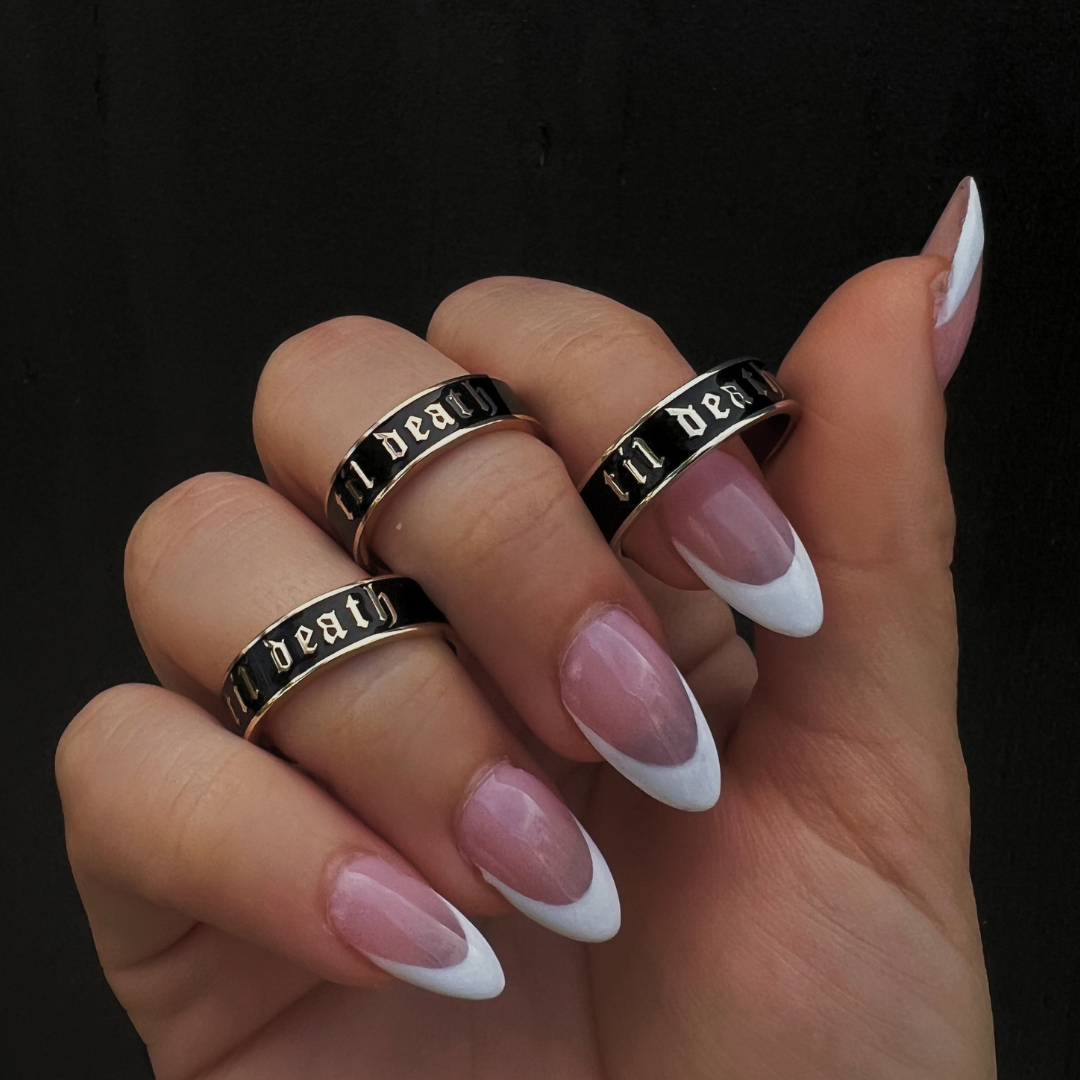What is Enamel Jewelry?
Curious about enamel jewelry? See why we're obsessed with this unique process!
History
Dating all the way back to the ancient civilizations of 13th century BCE, enamel jewelry has been coming in and out of style for thousands of years. Literally, dozens of cultures have dabbled with this delicate hand-painting technique and the process has been ever-evolving because of it.
From an ornamental scepter that was unearthed in ancient Cyprus to Celtic battle armor that waged war in Gaul and religious relics of the Renaissance, enamel has always been an efficient way to add illustrations and color without the use of gemstones.
How Enamel Is Made
Because enamel has exchanged the hands of many different artisans for centuries, there are several variations of enameling, but overall the basic principle is the same.
The process starts with a glass compound and a coloring agent. Enamel’s formula can be opaque, transparent and even something in between. The compound is mixed and blended into something called a fondant—actually, not too dissimilar from the icing.
Then the fondant is applied to a clean metal surface and heated to a precise temperature until the enamel melts, flows, and fills the cracks and crevices of the piece, eventually becoming vitreous and glass-like… aka shiny.
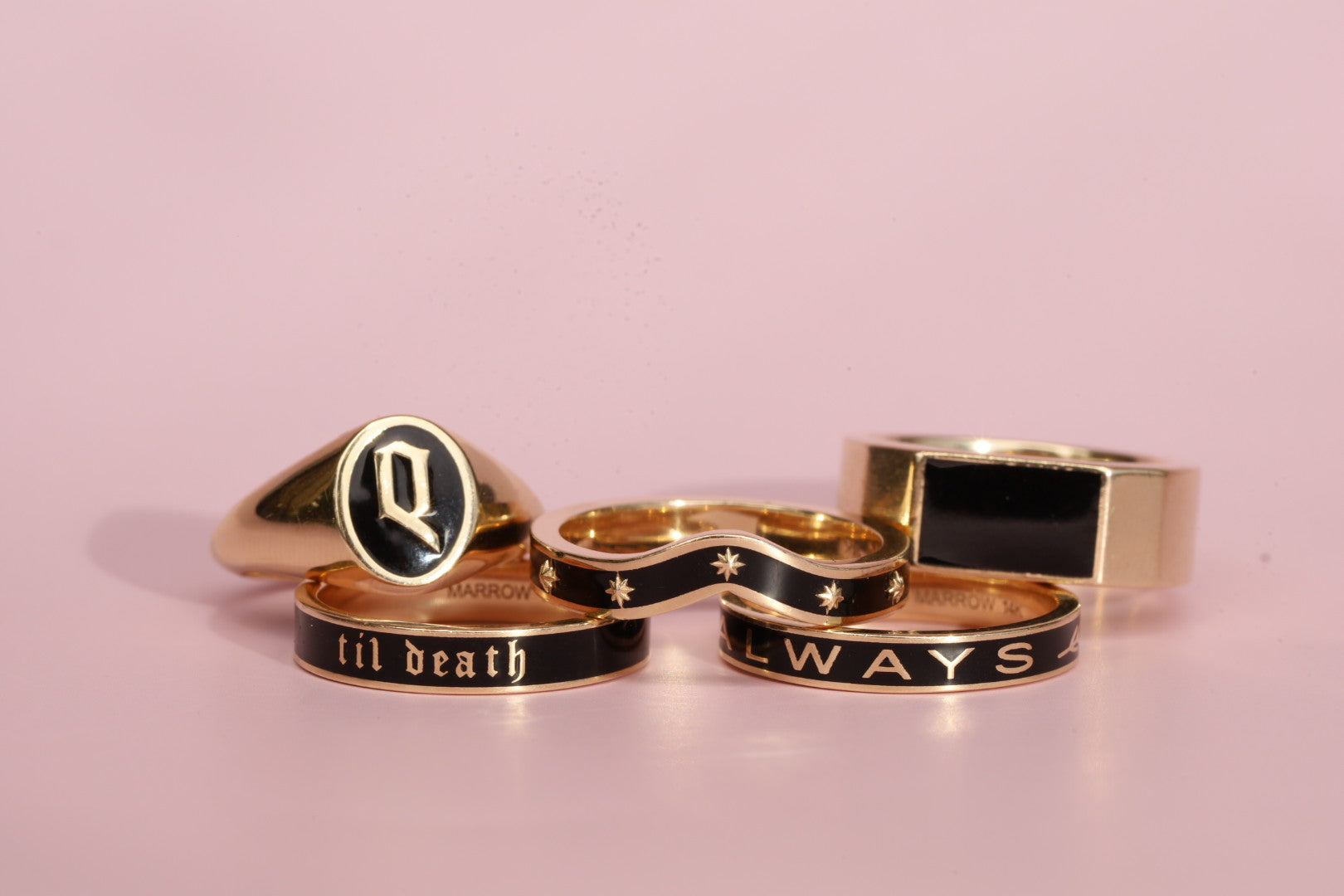
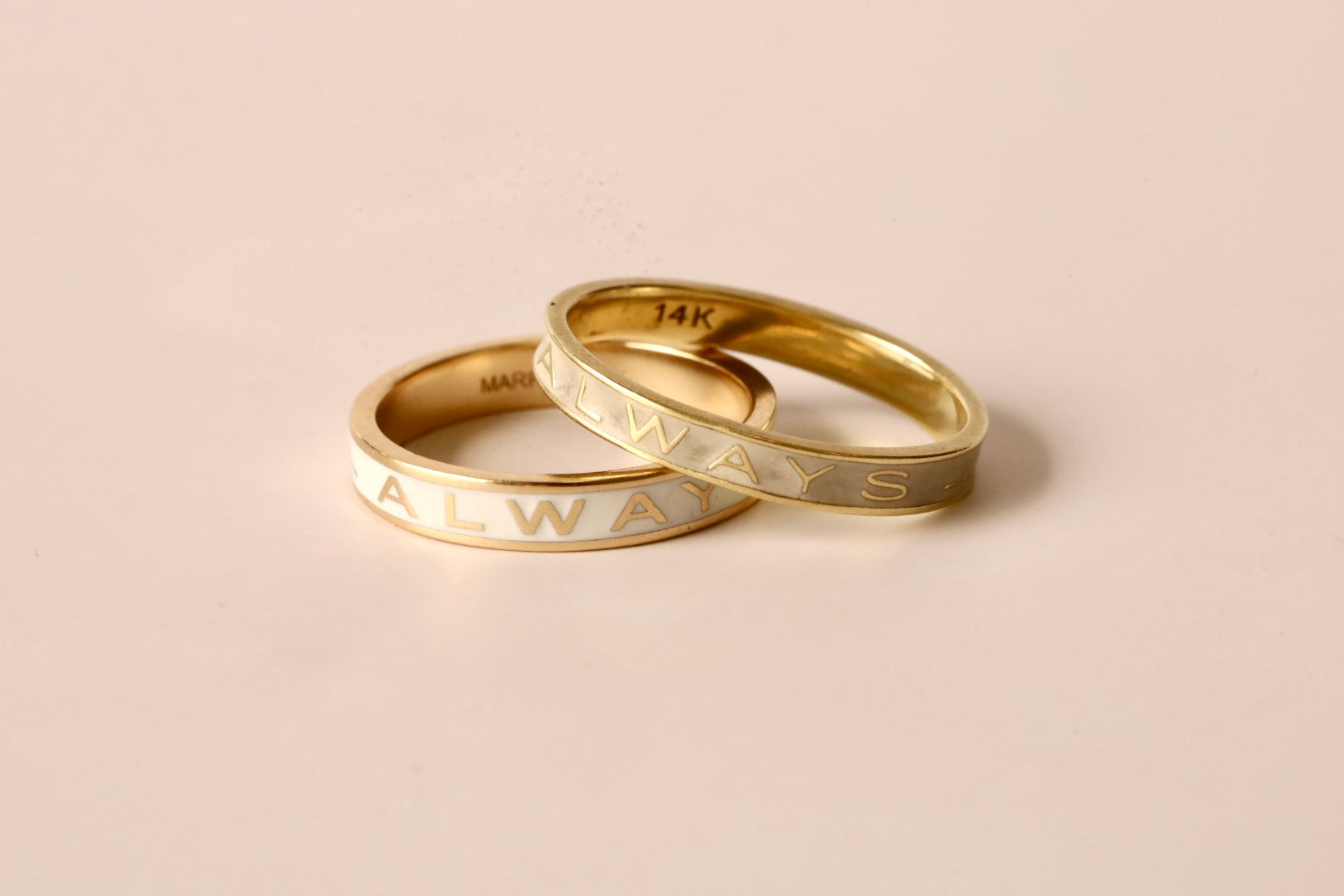
Care
Enamel is super delicate and should be treated just like your heirloom strand of pearls. She’s the last piece you put on when you head out the door and the first piece you take off when you come home… and definitely before you start your 10-step skin care routine.
No cooking, cleaning or DIY-ing in these babies; slip the enamel piece into a silk pouch in your bag before taking a dip in the pool or hitting the gym. To keep your enamel color vibrant, remember to remove your rings when dying your hair and applying self tanner!
Enamel may fade or chip over time with storage in direct sunlight and aggressive wear. We recommend cleaning your enamel jewelry with only warm water, mild soap, and a soft cloth. Please avoid any at-home ultrasonics and harsh chemicals.
Sizing
Since the process of creating a piece of enamel jewelry is so time-intensive and custom for each client, these pieces cannot be resized.
If you’re unsure of your size before purchasing, you can nab a ring sizing tool here! Typically we recommend sizing up a half size, due to the width of the band.
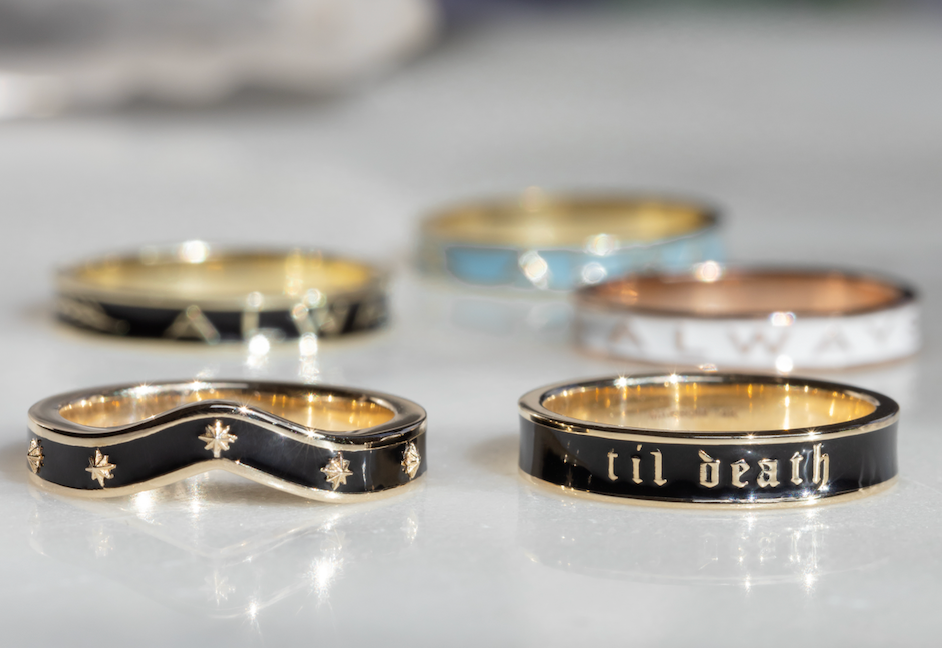
![Til Death Black Enamel Band - 4mm [yellow gold front]](http://www.marrowfine.com/cdn/shop/files/Til_Death_Black_Enamel_Band_-_4mm.png?crop=center&height=1000&v=1727821921&width=1000)
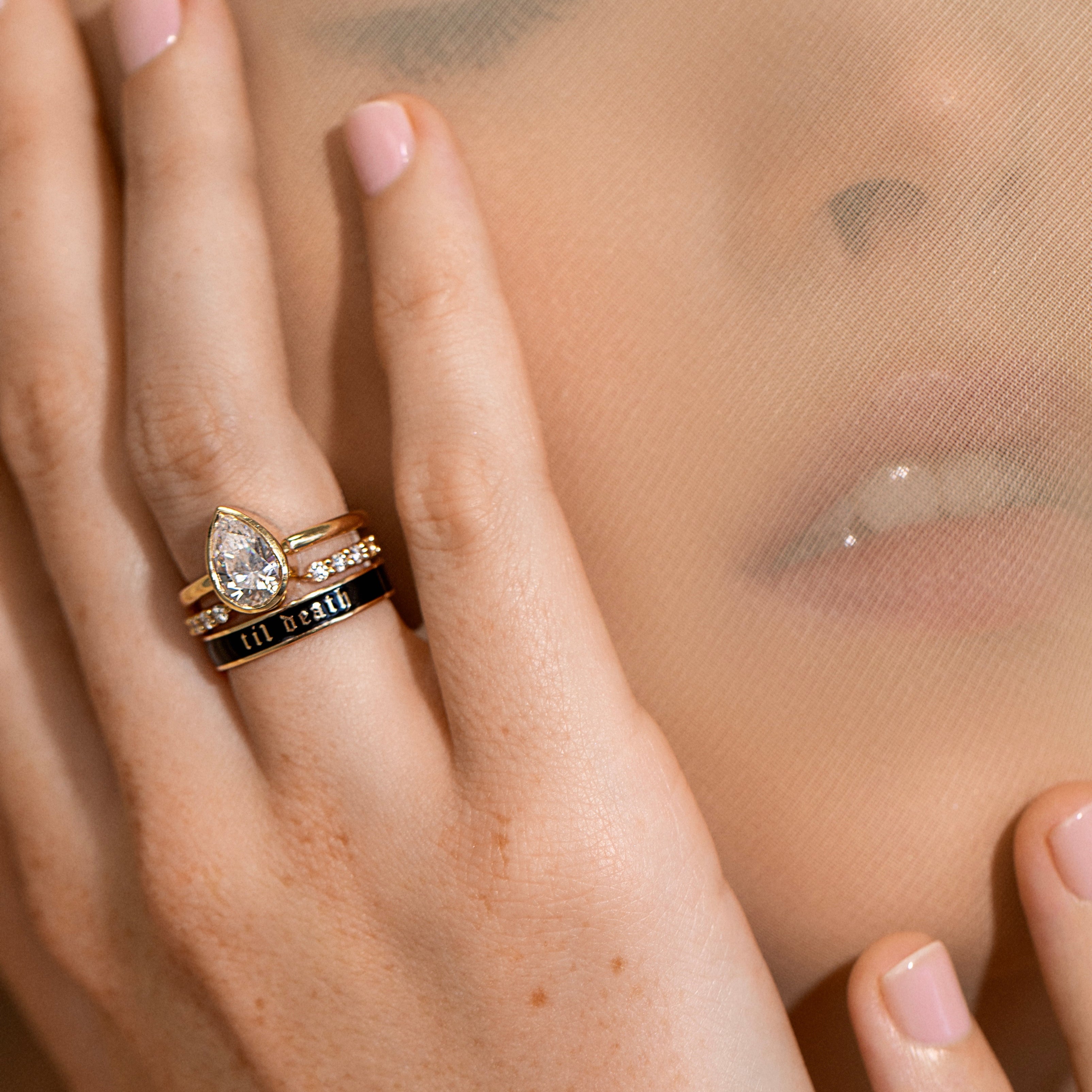
![White Diamond Mini Lucy Wave Band [Yellow Gold]](http://www.marrowfine.com/cdn/shop/files/WhiteDiamondMiniLucyWaveBandYG.jpg?crop=center&height=1500&v=1741022376&width=1500)
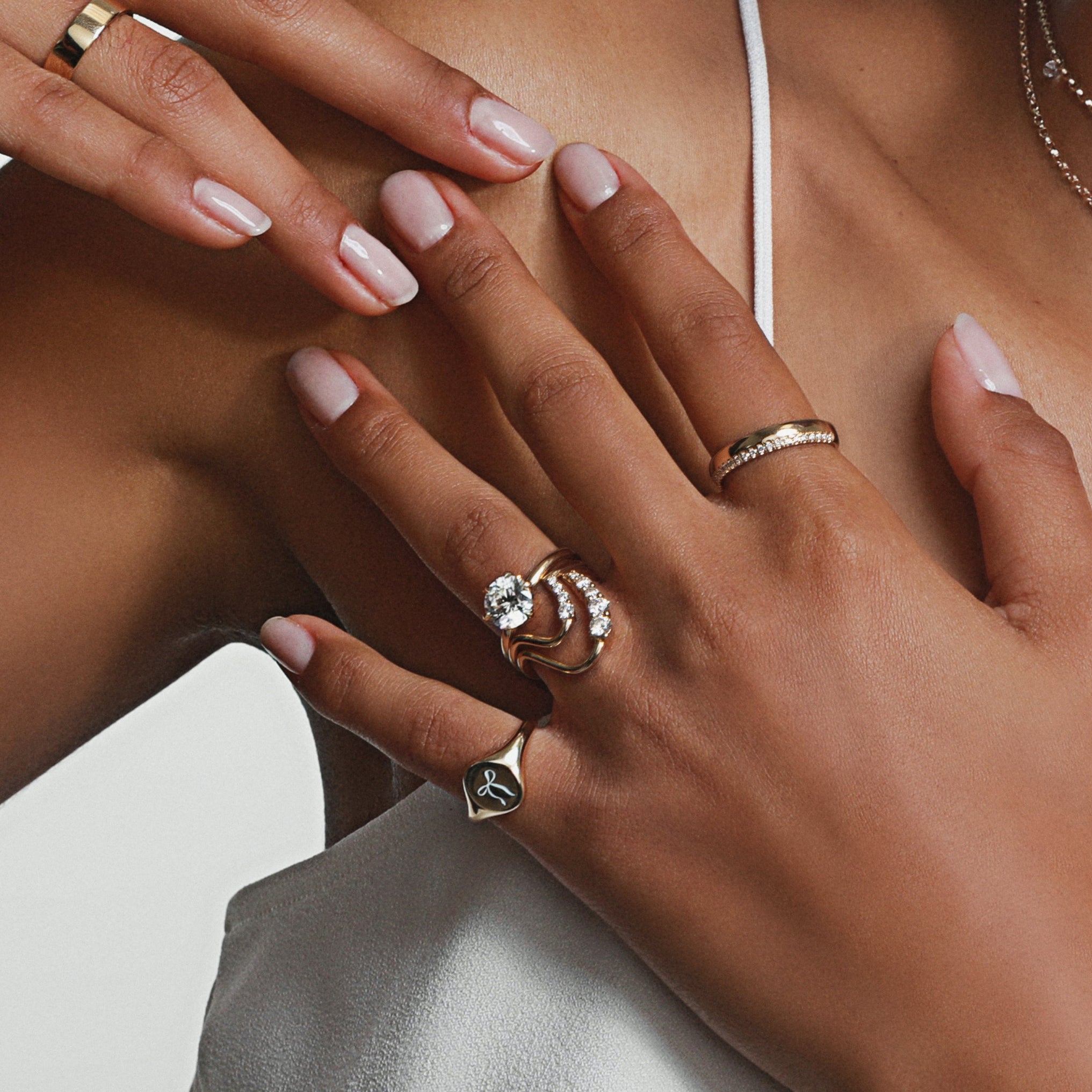
![Something Blue Enamel Band [Yellow Gold]](http://www.marrowfine.com/cdn/shop/files/SomethingBlueEnamelBand.png?crop=center&height=1000&v=1727823884&width=1000)
![Something Blue Enamel Band [on hand]](http://www.marrowfine.com/cdn/shop/files/SomethingBlueEnamelBand_5.png?crop=center&height=1000&v=1740416231&width=1000)

![Marrow Fine Jewelry 6mm Til Death Black Enamel Band [Yellow Gold]](http://www.marrowfine.com/cdn/shop/files/Til_Death_Black_Enamel_Band_-_6mm.png?crop=center&height=240&v=1727823220&width=240)
![White Diamond Mini Lucy Wave Band [Yellow Gold]](http://www.marrowfine.com/cdn/shop/files/WhiteDiamondMiniLucyWaveBandYG.jpg?crop=center&height=240&v=1741022376&width=240)
![Everyday Wave Band - 3mm [Yellow Gold]](http://www.marrowfine.com/cdn/shop/files/LargeEverydayWaveBand_YG.jpg?crop=center&height=239&v=1719357278&width=240)
